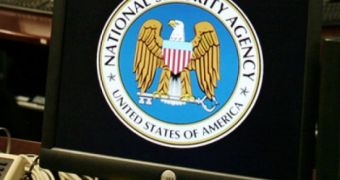As the NSA was hoping things will slowly die out and no more ground-breaking information about their mass-surveillance programs would leak out, new info was published, showing that things were indeed worse than previously thought.
Over the past two and a half months since the first articles about the NSA spying were published, the NSA has kept denying the programs the media was talking about were not as bad as they were painted to be.
However, new information published by the Wall Street Journal, indicates that roughly 75 percent of all US Internet traffic, including communications by foreigners and Americans was within reach of the NSA.
This new information, of course, clashes with official statements from the intelligence agency, made a couple of weeks back, which indicated that they were “touching” only 1.6 percent of Internet traffic.
Programs known as Blarney, Fairview, Oakstar, Lithium and Stormbrew are being used by the American intelligence agency to monitor the content of emails, not just their metadata, but also that of digital phone calls placed within the United States.
The Wall Street Journal quotes individuals from the NSA, who wished to remain anonymous, which told the newspaper that the NSA wasn’t just “wallowing willy-nilly” through communications, but rather sought “high-grade ore.”
In order to obtain this, the NSA has filters set in place, designed to identify communications that begin or end outside the United States. However, this means that unlike what the US officials have been saying over the past few months, it isn’t just foreign data that is being collected and that “inadverted” collection of domestic data is a lot wider than they’d like people to think.
And while the National Security Agency says the surveillance programs are important to combat terrorism and protect national security, one of them is known to have been set in place since before the tragedy of September 11, 2001.
Blarney was operating near important fiber-optic landing points, including in San Francisco, California and New Jersey, with the intention of intercepting foreign communications entering and exiting the United States.

 14 DAY TRIAL //
14 DAY TRIAL //